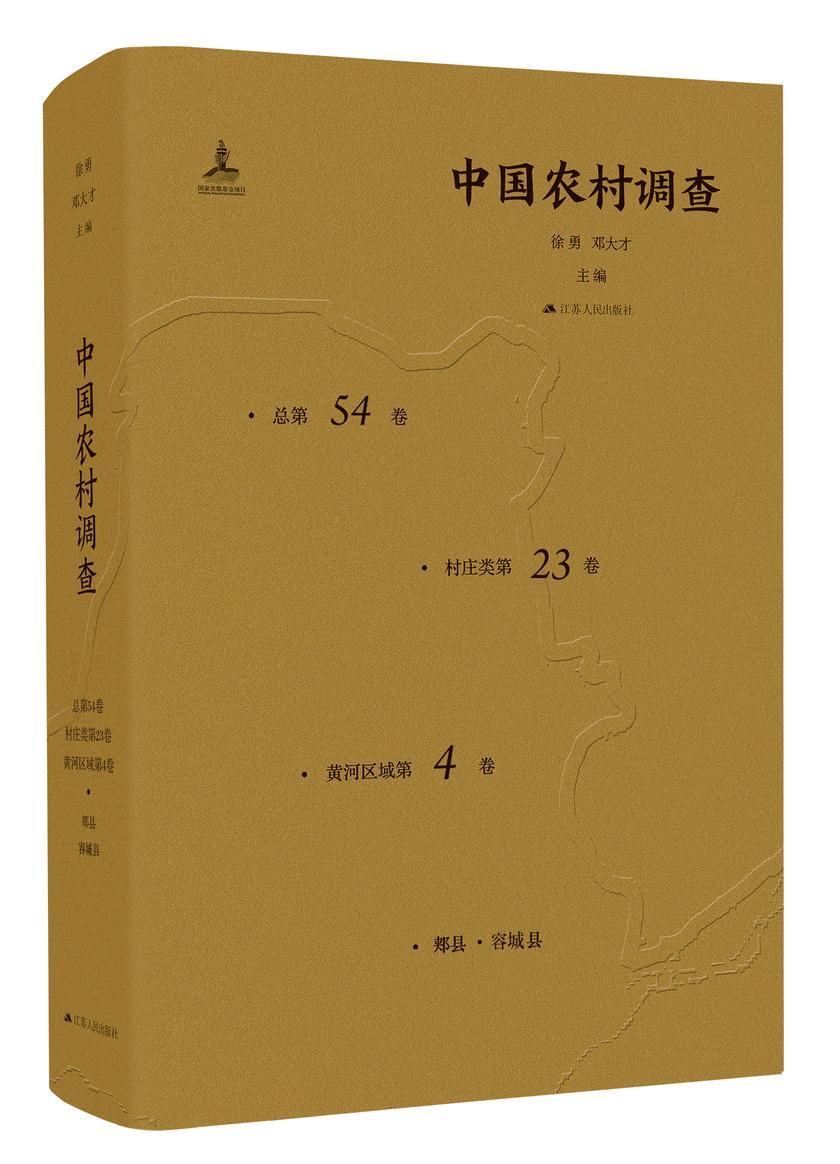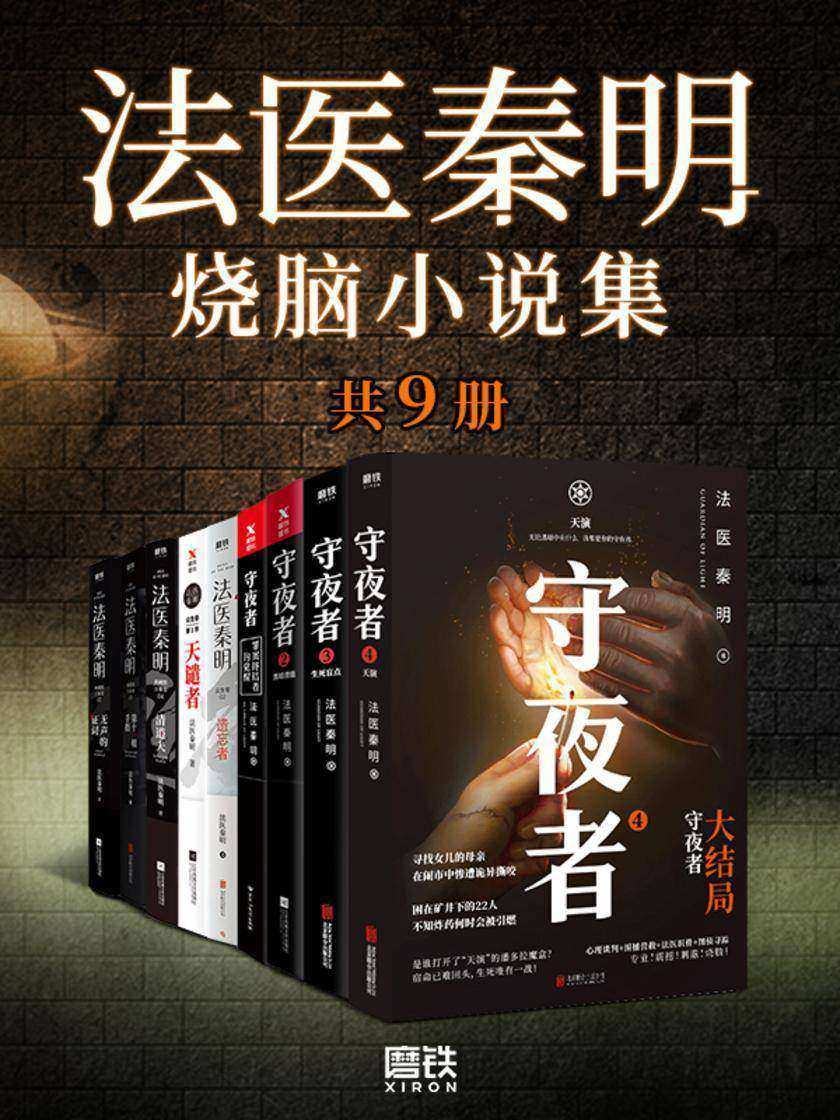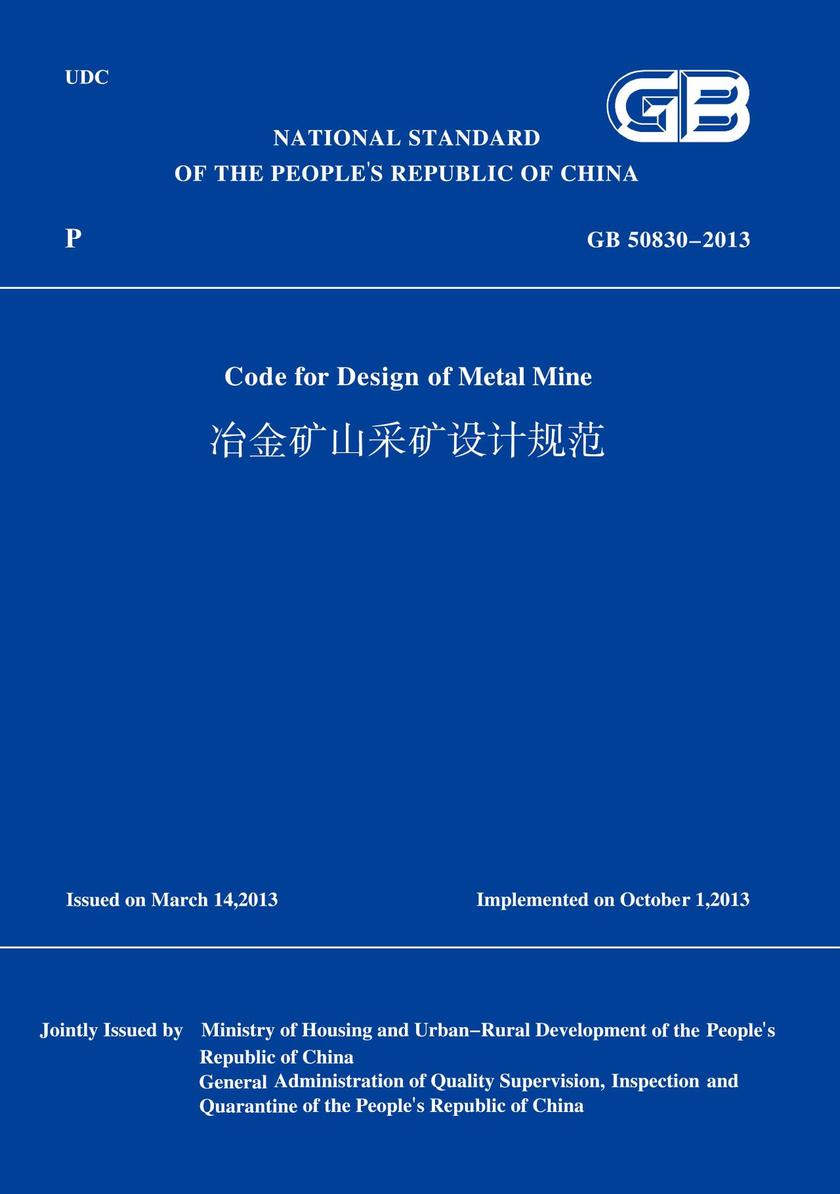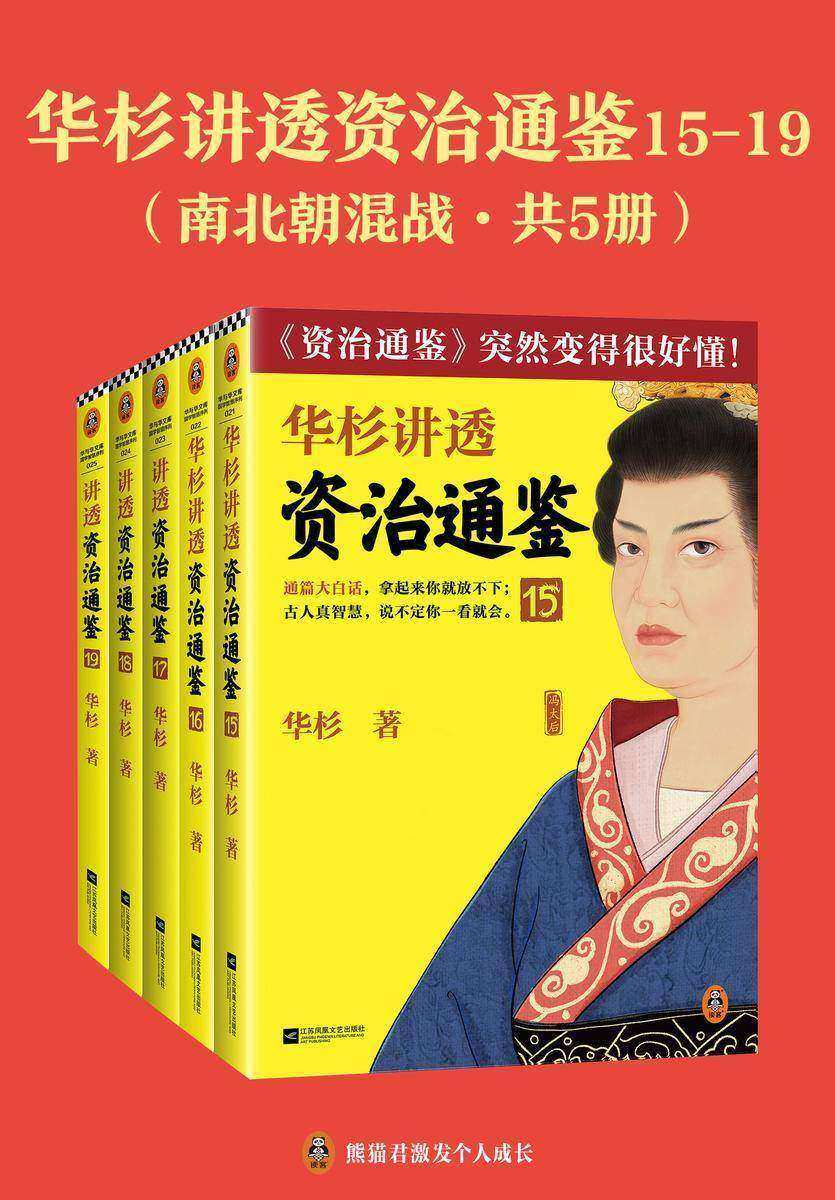
中国农村调查 (总第54卷·村庄类第23卷·黄河区域第4卷)
¥294.00
本卷收录了两个村庄的调查报告:一是河南省平顶山市郏县堂街镇朱洼村,二是河北省保定市容城县南张镇北张村。二者均属于平原大姓村庄。两份报告各从村庄由来、自然、经济、社会、文化、治理六方面,对村庄的传统形态行深描,兼涉其历史变迁与现状,为深了解黄河区域村户社会的底色与特质提供了翔实的一手资料。


“洞见未来,掌握科技新趋势”系列套装(套装12册)
¥294.00
《脑机穿越》讲述了“人机融合”的未来,即“脑机口时代”的到来!在未来科技的驱动下,科幻大片的场景已逐渐走现实。人类通过思维控制人造工具,如今听起来无法想象的事情,在未来会成为常态。从海洋深处到超新星禁区,甚至到我们体内细胞间的微小裂缝,人类的触及范围将追上我们探索未知领域的野心。 《脑机穿越》也是“脑机口”的简要发展史。作者尼科莱利从脑机口对传统神经科学的颠覆,到早期的“信息输出”,即机器如何读取大脑信息;再到现在科学家苦心钻研的“信息输”问题,即反馈信号如何作用于大脑……为我们描绘了一幅人类未来新图景! 在未来,随着脑机口技术的不断完善,很多渐冻人患者、严重瘫痪患者也将从中受益。脑机口有望让这些病患重新恢复功能性运动,重新学会行走。同时,脑机口并不只局限在医疗康复领域,作者正在行的“大脑校园”项目将是多学科合作的典范,它将提升人们的教育、健康及生活标准。甚至,我们能祖先的记忆库,下载他的思想,通过他私密的感情和生动的记忆,创造一次你们原本永远都不可能经历的邂逅……对于脑机口将为人类带来怎样的未来生活,这些仅是窥豹一斑。


萌历史:看完大笑不绝,过目不忘(共9册)
¥293.99
1分钟学到1个历史知识点!萌历史套装,共9册。分别为《历史为什么:虫小绿漫画中国史(共2册)》《过一日古人生活》《从前的古人生活慢》《原来历史可以这样好玩(全三册)》《历史这么有意思(全2册)》


部级领导干部历史文化讲座(套装共6册)
¥293.99
为帮助广大领导干部丰富历史文化知识,汲取治国理政历史经验,提高文化素养和思想政治素养,提升马克思主义理论水平,我们从“部级领导干部历史文化讲座”中遴选80多堂经典讲座,汇编整理成“‘部级领导干部历史文化讲座’20 周年纪念版丛书”隆重出版。丛书共分6册,分别为《以史为鉴:从家国兴衰看治国之道》《诗书礼乐:传统文化与立德修身》《良法善治:建制史鉴与吏治得失》《酌水知源:文化源流与民族精神》《问道思辨:哲学经典里的思想智慧》《文明激荡:全球视野下的中国与世界》。丛书名家汇集,由楼宇烈、冯其庸、叶嘉莹、金冲及、钱乘旦、王蒙、樊锦诗、金一南等80多位享有盛誉的专家学者担纲主讲,生动分析解读世代治国安民的历史经验,堪称历史文化集大成之作,有思想、有情怀、有深度、有温度,是80多位史学泰斗、文化名家、知名学者献给部级领导干部颇具思想价值的历史文化“公课”。


法医秦明烧脑小说集(套装共9册)
¥293.72
套装包括: 法医秦明.遗忘者 法医秦明:天谴者 守夜者:罪案终结者的觉醒 守夜者2:黑暗潜能 守夜者.3,生死盲点 守夜者.4,天演 法医秦明:清道夫 法医秦明:第十一根手指 法医秦明:无声的证词


“打造活力组织,掌握领导力密码”系列套装(套装12册)
¥293.70
●一本对奈飞文化行深解读的力作。2009年,奈飞公发布了一份介绍企业文化的PPT文件,在网上累计下载量超过1500万次,被Facebook的CFO谢丽尔·桑德伯格称为“硅谷重要文件”。本书是奈飞前CHO,PPT的主要创作者之一帕蒂·麦考德对这份PPT文件的深度解读。 ●本书系统介绍奈飞文化准则,全面颠覆20世纪的管人理念。在这本书中,帕蒂·麦考德归纳出8条奈飞文化准则,从多个角度揭示了奈飞为什么要对传统的企业文化理念发起冲,以及它在造自己的企业文化的过程中究竟提出了哪些颠覆性的观。 ●各类企业造自己的“奈飞文化”的行动指南。《奈飞文化手册》通过特别的章节设计,方便企业管理者将之运用到自己的企业,造属于自己的“奈飞文化”。


昆虫分类学(修订版)
¥292.99
《昆虫分类学》(修订版)全面阐明了昆虫分类学的理论、原则、法规和方法,并按亲缘关系对35个目的种类、分布、生物学、生态学及其在亲缘分类的位置以及各目昆虫外部形态、内部解剖特征、生活史等行了说明,其中包含与经济有关的种类或我国特有的昆虫种类等。在目下又分亚目、总科、科、亚科、属、种等阶元相应的多层次检索表,特别是属、种以下近缘种的区别等。《昆虫分类学》(修订版)主要取材于中国产又具经济意义的昆虫物种,涉及有害昆虫防治和有益昆虫的利用,凸显中国本土特色。本书*版上、中、下册分别出版于20世纪50年代、70年代和80年代,是我国*部较为完整的昆虫分类学著作。《昆虫分类学》(*版)一经面世,受到广泛重视。南大学、中山大学、北京大学、四川大学和复旦大学五所高校合编的昆虫学教材中就积极采用蔡氏昆虫分类系统,并引用有关图表和资料等。该书产生了极为深远的影响,被公认为是国内昆虫分类*权威性的著作之一。该书修订版的出版对我国农业、林业、医学和环保等生产、科研和*门均具有重要理论和生产实践的意义。《昆虫分类学》(修订版)可供昆虫研究相关科研人员,以及生命科学相关专业、环境保护相关专业、医学相关专业、农林相关专业师生使用。


柏拉图全集(全三卷)(四册全)
¥292.50
本版《柏拉图全集》由刘小枫教授主编,遵从西方学术界公认的忒拉绪洛斯体例,收录柏拉图所有传世作品,包括35篇对话、13封书信、释词1篇和托名作品7篇,分三卷出品:第一卷为中短篇对话、书信、释词及托名作品,第二卷和第三卷分别为柏拉图的长制对话《理想国》和《法义》。 本版《柏拉图全集》依托苏格兰古典学家伯内特的希腊文校勘本,并参照西方古典语文学家的多种笺注本和权威西文译本,充分吸纳西方柏拉图研究笺注成果。本版《柏拉图全集》由26位译者共同完成,译者均有过古希腊语文学训练,对所译篇目有专门深研究,多数译者还曾就所译篇目撰写过博士论文或研究专著,是基于研究的翻译。本版《柏拉图全集》译文紧贴希腊语原文,尽量贴近柏拉图作品原貌,同时注重传达柏拉图作品的文学性和对话的口语特色。译者对某些人名、地舆、诗文典故、语言游戏等做了简要注释,扫除了阅读障碍,提高了中译本的普及性。 综上,本版《柏拉图全集》是一套简明、可靠、可读性强的足本《柏拉图全集》中译本。

The Spy Quartet: An Expensive Place to Die, Spy Story, Yesterday’s Spy, Twinkle
¥291.85
Four classic spy novels, four unnamed spies - just like Britain’s uber-cool sixties spy, ‘Harry Palmer’ - together in one e-bundle for the first time. When Len Deighton wrote THE IPCRESS FILE, he not only reinvented spy fiction, he created a style icon and literary legend: ‘Harry Palmer’. The nameless, working-class spy of the books found fame in three films starring Michael Caine, and the smart-talking, anti-establishment spy was suddenly cool. Hollywood would create a host of similarly super-slick spies, such as Napoleon Solo and Illya Kuryakin in The Man from Uncle. But ‘ Harry Palmer’ remains the best, and this quartet showcases the international exploits of someone who looks, sounds and acts like Harry. AN EXPENSIVE PLACE TO DIE – Into the twilight world of Parisian decadence and hidden motives come the agents of four world powers. SPY STORY – An attempted murder, the defection of a senior KGB official, and an explosive nuclear submarine chase beneath the Arctic Ocean are the sparks that ignite a brutal East-West power play. YESTERDAY’S SPY – They thought that Steve Champion, flamboyant hero and leader of an anti-Nazi intelligence group was gone. Then rumours surface of Champion’s sinister Arab connections and weapons-smuggling, forcing his old friend to investigate. TWINKLE, TWINKLE, LITTLE SPY – A Soviet space scientist defector, an English spy and an ex-CIA agent leave a blood-soaked killing trail across three continents, while overhead spy satellites watch all, twinkling like stars.


包罗万象的知识合集(套装10册)
¥291.66
《包罗万象的知识合集(套装10册)》堪称一座移动的知识宝库。《知道点中国哲学》以精炼语言勾勒中国哲学思想脉络,带读者领略先贤智慧;《中国姓氏文化》深挖姓氏背后的故事与文化密码,探寻家族传承奥秘。《不可不知的2000个军事常识》《科学常识》《地理常识》分别从军事、科学、地理领域,以丰富有趣的知识点,满足读者对不同学科的好奇。《了解点中国名人》《中国文化》聚焦中国名人风采与传统文化魅力,展现华夏文明底蕴。《你应该知道的2000个历史常识(世界卷)》和《历史常识通识读本(珍藏版)》则从不同视角讲述中外历史,让读者把握历史发展脉络。此外,《口头及书面用语规范手册》助力读者提升语言表达规范性。这10册书涵盖广泛,是读者丰富知识储备、提升综合素养的绝佳选择。

The Partials Sequence Complete Collection
¥291.26
For fans of The Hunger Games, Battlestar Galactica, and Blade Runner comes the Partials Sequence, a fast-paced, action-packed, and riveting sci-fi teen series, by acclaimed author Dan Wells. This collection contains all four books in the series.Partials: Humanity is all but extinguished after a war with Partials—engineered organic beings identical to humans—has decimated the population. Reduced to only tens of thousands by a weaponized virus to which only a fraction of humanity is immune, the survivors in North America have huddled together on Long Island. But sixteen-year-old Kira is determined to find a solution. As she tries desperately to save what is left of her race, she discovers that that the survival of both humans and Partials rests in her attempts to answer questions about the war's origin that she never knew to ask.Isolation: This digital novella takes us back to the front lines of this war, a time when mankind's ambition far outstripped its foresight. Heron, a newly trained Partial soldier who specializes in infiltration, is sent on a mission deep behind enemy lines. What she discovers there has far-reaching implications—not only for the Isolation War, but for Partials and humans alike long after this war is over.Fragments: After discovering the cure for RM, Kira Walker sets off on a terrifying journey into the ruins of postapocalyptic America and the darkest desires of her heart in order to uncover the means—and a reason—for humanity's survival.Ruins: Kira, Samm, and Marcus fight to prevent a final war between Partials and humans in the gripping final installment in the Partials Sequence. There is no avoiding it—the war to decide the fate of both humans and Partials is at hand. Both sides hold in their possession a weapon that could destroy the other, and Kira Walker has precious little time to prevent that from happening. She has one chance to save both species and the world with them, but it will only come at great personal cost.


内卷累,内耗更累:换个想法,才能换个活法(共7册)
¥290.09
套装共7册,分别为《糟糕,今天内耗又超标》《原来每个人都说自己压力好大》《吵架又没发挥好》《不要用别人的脑子思考你的人生》《解决冲突的关键技巧》《时间内卷》《只要说出来你就会好很多》

英帝国史(八卷本)得到罗振宇“双十一”直播推荐图书! 中国学者撰写的全景式英帝国史!英国史权威学者钱乘旦教授领衔,十余位专家历时二十年写作!
¥290.00
本书是中国学者撰写英帝国史的扛鼎之作。 二战后,“帝国”与“后殖民”研究已成为国际学术界的热门之一,成果赫然。但西方的研究都站在西方的立场上、弘扬西方的价值观念。这在英帝国研究中也是如此,以致今天的英帝国研究领域中,西方话语充斥其间,形成西方的一统天下。本书对英帝国的历史作细致的剖析,通过深研究,提出中国学者自己的诠释体系。 全书根据英帝国史的客观演,分八个阶段行讨论。 *阶段是英帝国的萌生期,这一时期,英国民族国家始形成,为海外扩张提供了制度保障。英帝国的萌生是民族国家的派生物,都铎王朝是英帝国的孕育人。本卷主要解释民族国家与英帝国萌生的关系,以及英国走上帝国扩张之路的背景与条件。 17世纪,英帝国从初生到形成。17世纪英国经历了政治大动荡,各种政体走马灯似地替换。但所有政府在帝国问题上却立场一致,都尽力扩张殖民地。这种现象背后是这样一个事实,即英国从民族国家形成起,就成为重商主义性质的国家。重商主义要求殖民地,早期英帝国是重商主义帝国。 18世纪是英帝国的第三阶段,是重商主义帝国战争的阶段,战争的规模逐渐从欧洲扩展到世界,始出现“世界的”大战。所有这些战争都是重商主义性质,英国与其他重商主义国家(西、葡、荷、法等)争夺海洋控制权,为重商主义而鏖战。本卷主要研究帝国战争的本质,重商主义是战争的根源。 就在英国败所有对手、几乎赢得海洋霸权的时刻,美国革命却瓦解了英帝国。这是殖民帝国内在危机的*次大暴露:宗主国与殖民地之间必定要对抗,结局一定是帝国解体。不过在那个时代,人们没有意识到这一,相反,英国政府从美国革命中吸取教训,调整了殖民政策,以致短短三十年之间,又形成一个崭新的帝国,即“第二帝国”。这是英帝国的第四阶段:新旧交替的阶段。在这个阶段上,重商主义帝国渐次退出,新理念和新地域构成了新帝国。本卷主要研究了导致帝国生命更新的机制。 新帝国的基础是工业革命,其巨大的生产力和廉价的工业品成为新帝国的力量源泉。英国在实现自由贸易的过程中夺取了世界霸权,它着“自由贸易”的旗帜,将触角伸向全世界。就在这个时候,“自由帝国主义”理论出现了,它提倡“无形帝国”,认为英国不需要殖民地,只需要“自由贸易”。一个老牌的殖民国家,却“不要殖民地”了,这是为什么?这是英帝国的第五个阶段。 19世纪下半叶,就在帝国的旗帜高高飘扬、大英帝国如日中天时,英国却始走下坡路了。其他国家追赶工业化,破了英国的工业霸权,也破了它的殖民霸权。英国再一次调整殖民政策,投到争夺殖民地的斗争中去,“无形帝国”又变成“有形帝国”,英帝国也完成了“日不落”的使命。可是,帝国的内在逻辑仍然在起作用:就在英帝国看似*辉煌时,新的解体又始了。对英帝国的第六阶段,本卷重分析了帝国内在逻辑的必然性。 为拯救帝国,英国政治家再一次使尽解数,试图用“帝国联邦”来代替帝国,建立世界性的“联邦共同体”,在大世界中建立一个“英国的”小世界。英帝国在第七个阶段上试图完成这个转型,但转型没有成功。本卷解释了这一转型失败的原因和实质,涉及英国的观念、价值、制度结构等等。 二战结束后,英帝国骤然瓦解,其速度令人诧异。尽管有政治家构想出“第三帝国”的方案,试图在苏伊士以西维持帝国;但人们普遍以为:英国人深知时务,主动撤离,完成了“非殖民化”。果真如此吗?并不是。本卷研究发现,英国人在不同地区的撤离方式是不同的,有和平退出,有战争对抗。原因是,和平与战争都服从相同的帝国目标:构建一个实质性的“英联邦”,以维护英国的大国地位,这就是所谓“非殖民化”的本质。不过英国的梦想还是破灭了,英国的大国地位也随之破灭:英帝国寿终就寝。


GB50830-2013冶金矿山采矿设计规范(英文版)
¥290.00
本书是国家标准《冶金矿山采矿设计规范》GB50830-2013的英文版。本规范由住房和城乡建设部第7号公告发布,自2013年10月1日实施。本规范适用于冶金矿山新建、改建和扩建工程的采矿设计。本规范共11章和7个附录,主要内容包括:总则,术语,基本规定,矿山地质,矿山防治水,岩石力学,露天开采,地下开采,矿山机械,井巷工程,矿山安全生产与环境保护。

中国农村调查(总第58卷.村庄类第27卷.黄河区域第8卷)
¥290.00
【内容简介】 本卷收录了两个村庄的调查报告:一是安徽省宿州市萧县刘套镇管粥集村,二是河南省商丘市虞城县镇里固乡刘屯村。两份报告均从村庄由来、自然、经济、社会、文化、治理六方面,重点对村庄的传统形态进行深描,兼涉其历史变迁与现状,全景式展现了相应地区乡村社会的生产、生活与组织形态,为深入了解黄河区域村户社会的底色与特质提供了翔实的一手资料。两篇报告末尾均附有调查小记与调查日记,着重记录驻村期间的见闻,内容自选,没有框架束缚,灵活而真实地反映了当下乡村的状况。

中国农村调查(总第59卷.村庄类第28卷.黄河区域第9卷)
¥290.00
【内容简介】 本卷收录了两个村庄的调查报告:一是河南省周口市项城市永丰镇郭大庄村,二是河南省洛阳市偃师市首阳山镇南蔡庄村。两份报告均从村庄由来、自然、经济、社会、文化、治理六方面,重点对村庄的传统形态进行深描,兼涉其历史变迁与现状,全景式展现了相应地区乡村社会的生产、生活与组织形态,为深入了解黄河区域村户社会的底色与特质提供了翔实的一手资料。两篇报告末尾均附有调查小记与调查日记,着重记录驻村期间的见闻,内容自选,没有框架束缚,灵活而真实地反映了当下乡村的状况。


无师自通系列书 (17册)
¥290.00
包括: 无师自通系列书 电焊工操作技能(见5123-4819)(停版) 无师自通系列书 LED照明驱动电路设计方法与实例(停版) 无师自通系列书 轻松看懂电气控制线路图(停版) 无师自通系列书 制冷设备维修操作(停版) 无师自通系列书 商用制冷设备检修即学即用(停版) 无师自通系列书 电焊工操作技能(彩图版) 无师自通系列书 万用表使用技巧(停版) 无师自通系列书 电焊工操作技能(第二版) 无师自通系列书 汽车电工操作技能 无师自通系列书 高压电工基础知识 无师自通系列书 PLC应用入门(停版) 无师自通系列书 电气故障快速查找技巧 无师自通系列书 轻松看懂汽车电路图 无师自通系列书 万用表检测电子元器件 无师自通系列书 变频器选型、安装与维修 无师自通系列书 万用表检测汽车电路 无师自通系列书 常用电焊机维修技术


吴兆义书法作品集
¥290.00
本作品集分上、下卷。豪华精装版。作品书写内容丰富,诗词曲赋、名言名句、古今中外尽情展现。作品形式多样,行楷草书、竖式横幅、楹联册页、扇面斗方琳琅满目。


百家讲坛李寅:清十二帝的政治、爱情与性格(共8册)
¥289.99
百家讲坛主讲人李寅清史著作合集,帝王生平,后宫秘辛大揭秘。 双面帝王乾隆:饱受争议,毁誉交织的一代帝王,乾隆,他把清朝推向了*,刷新了两项中国封建帝王的记录:寿命长、掌权久。 本书从乾隆帝的顺利即位开始写起,到其陵墓被盗为止。 全书以史为据,正本清源,为广大读者呈现了一个真实的乾隆帝。 聪睿可汗努尔哈赤:努尔哈赤从出生至出道,从出道至发迹,从发迹至称汗,期间可谓荆棘丛生,历经坎坷。 本书讲述了他一生的征战,也写了其家庭与感情生活,给读者还原了一个性格鲜明、形象丰满的努尔哈赤。 皮影皇帝同治:19岁离世,是大清朝为短命的皇帝。他在位期间,几乎所有的政事都由他的母后慈禧代劳,他或许只是一个皮影,由幕后的慈禧操纵而已。 本书描写了同治皇帝短短的十三年发生的大事件,从同治的性格、教育、感情、死因等方面多维度展现了一个鲜活的真实的同治。 智慧之王皇太极:清朝历目前一个承前启后的君王,继承了后金可汗努尔哈赤的大业。 本书按时间顺序从皇太极的主要成就、性格、感情生活、为政举措等方面多维度展现了一个鲜活的真实的皇太极。 清朝十二帝疑案正解:清朝十二位皇帝,一共有多少谜团? 顺治帝看书累吐血,这个传说可信度几何? 康熙为什么喜欢小儿子? 雍正弑父和康熙暴亡传闻靠谱吗? 乾隆皇帝竟然会五种外语,这事儿是真是假? 同治皇帝为何没有遗传慈禧的韧劲? 光绪帝缘何死于慈禧去世前一天? 本书为您剖析权力塔尖上的皇帝们的悲喜人生,帮您看透奢华背后鲜为人知的爱恨悲欢,还原一个真实鲜活的大清朝。 清十二帝后宫疑案:清朝这些朝堂之上正襟危坐、高高在上的皇帝,在后宫之中和他们的妻妾儿女过着怎样的家庭生活? 接近权力的清宫嫔妃们,过的真是“一朝入选帝王宫,万千宠爱于一身”的生活吗? 本书为我们讲述清代十二帝王的后宫生活,揭开那些鲜为人知的后宫疑案。 大清后宫的正面与侧面:这里有你在影视剧中遇到的种种问题的正面回答:历史上真有甄嬛这个人吗?帝王在后宫中的权势也像外朝那样充满血腥吗?雍正是一个多情种还是勤勉帝王?……这里也有你在历史教科书中所没有了解的清代后宫段子:康熙当演员、乾隆养生秘诀、甄嬛“红杏出墙”、慈禧怕女儿…… 一样的后宫,不一样的风情。 雍正和他的甄嬛们:以热播电视剧《甄嬛传》为线索,将电视剧中几位引人注目的后、妃、嫔与其历史原型相对应的一一对比剖析,揭开雍正帝后妃的历史真面目。 并且以史实的形式,细致描述了清代帝王及嫔妃的后事安排、棺材制作、入殓出殡和大葬及他们的陵墓等,揭开雍正帝的甄嬛们后宫生活的神秘面纱。


天明有暖风
¥289.90
【都市情感+温暖治愈+女性群像】《我的治愈人生》医生系列第二部。所有苦难与挣扎背后,都有不期而遇的灿烂天明。 凌晗是肝胆病医学高材生,为了家庭转岗基层医院,却因不生二胎致婆婆不满,丈夫家暴,离异带娃,事业停滞…… 钱明慧是工作狂女强人,为躲父母催婚甚至要出家为尼,当真爱为结婚而来,婚恋观的不断碰撞让她心力交瘁…… 蒋夕溪是金融行业精英,背后却伤痕累累,家庭重男轻女,初恋爱而不得,现任男友甚至当面出轨…… …… 生活总会遭遇一场场猝不及防的暴雨,但坚韧和智慧让她们携手前进,直到暖风拂袖的那天。 若你也正在经历人生的阴雨季,翻开本书,共待云开雾散,雨霁天明!


华杉讲透《资治通鉴》15-19(南北朝混战·共5册)
¥289.70
《资治通鉴》从战国写到五代十国,生动展现了16个朝代1362年历史中一个个活生生的人和故事,可以说是中国政治和文化遗产的“大数据”和“案例集”。 本系列共5册,讲述魏晋后期和南北朝混战的历史,宋齐梁陈一一登场。*终,陈国末任皇帝陈叔宝荒废朝政,为隋主杨坚所灭! 北齐主高纬错误决策致兵败:避免情绪化决策 【历史事件】北周主宇文邕带兵抵达平阳,被壕沟阻止。北齐主高纬头脑一热,下令填平壕沟,迎战,北齐军稍有退却,高纬就执意逃走。*终,北齐军心涣散,大溃。 【华杉讲透】决策背后都是情绪在起作用。我们的通病就是不讲逻辑,只有意识到自己有这毛病,才有可能防止自己犯病。 翻开本书,像读小说一样津津有味读懂《资治通鉴》!




 购物车
购物车 个人中心
个人中心



